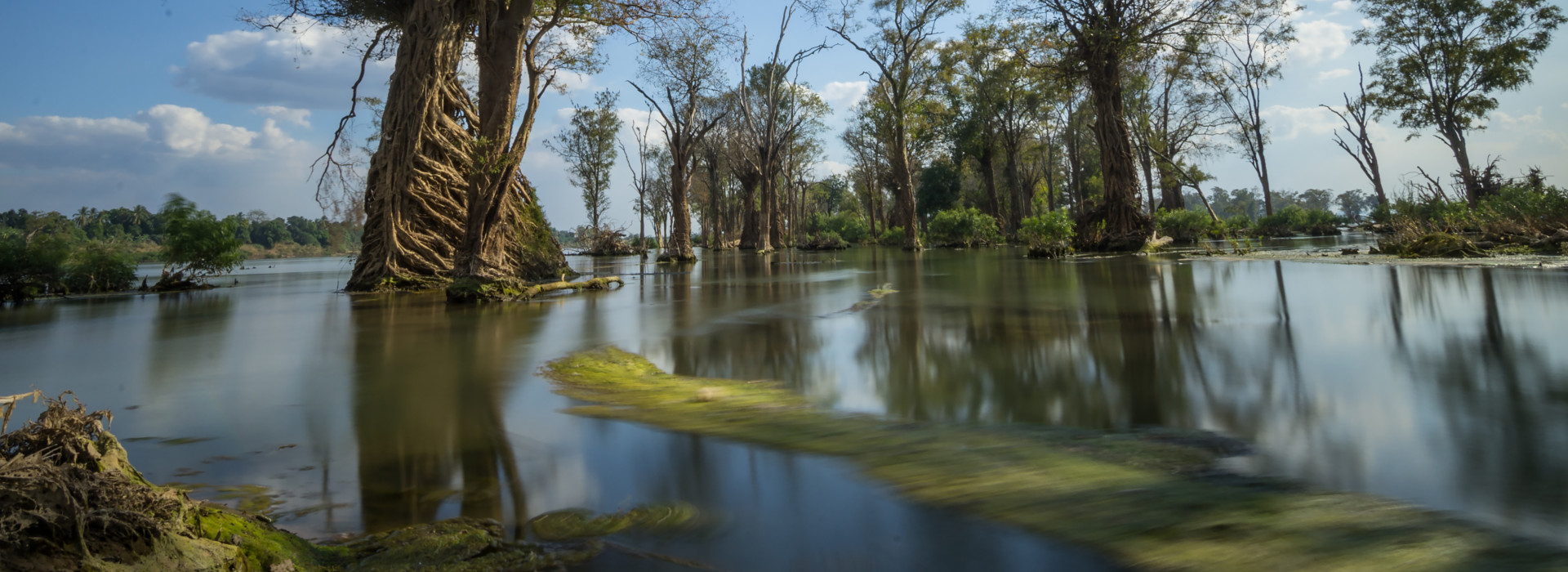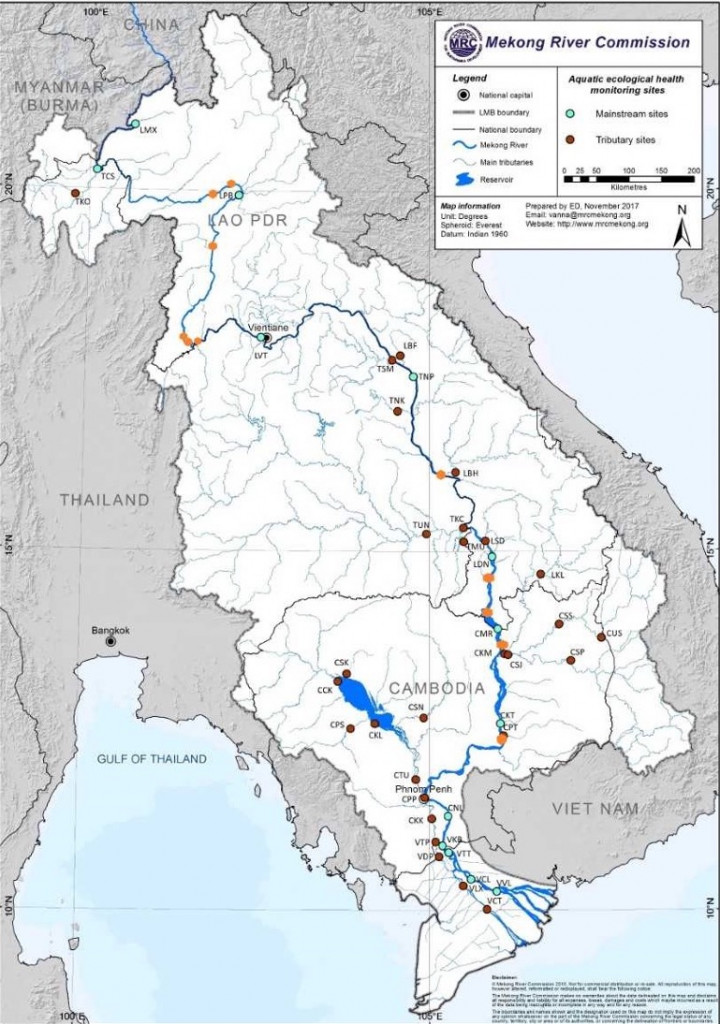
Ecological Health Monitoring
As one of the world’s longest rivers, the Mekong provides its people with more than a stable supply of fish. It is home to a range of habitats. Floodplains, flooded forests, deep pools, rapids/reefs, sand bars, sand beaches, provide habitats for a variety of organisms. These aquatic resources support the livelihoods of about 65 million people living in the Lower Mekong River Basin (LMB). The sustainability of these resources depends on maintaining the ecological health of the river.
A healthy river ecosystem means good water quality, adequate water volumes, thriving plant and animal life, and diverse habitats. However, the expansion of infrastructure developments in the four lower Mekong countries, such as hydropower, irrigation, and navigation projects, poses a major risk to the river ecosystem and is impacting on people’s livelihoods and food security.
The construction and operation of dams, for instance, has a profound impact on plant and animal life, and thus the ecology of the Mekong River. Organisms that naturally move upstream may find their paths blocked and those that move downstream may be trapped in reservoirs/impoundments, where the current which transports them is greatly reduced or even absent. Dams can also cause changes to water quality and affect sediment transport.
MRC monitoring data shows that the ecological health of the Mekong has deteriorated due to human activities and the development of infrastructure projects on the mainstream.
In light of these challenges, the river’s ecological health must be accurately monitored. By monitoring a river’s ecosystem, we can also learn about changes to the river that may have repercussions for the people that depend on it.
MRC Interventions
Over recent decades, the MRC has developed various initiatives to enable the four Member Countries to manage the ecological health of the Mekong River. The Ecological Health Monitoring (EHM) programme is designed to monitor the river’s long-term ecological health by using biological monitoring of four major organism groups along with physical and chemical measurements.
Biological monitoring is used throughout the world to evaluate freshwater ecosystems, manage water quality and determine the amount of water needed to maintain a river’s environment. It analyses how specific organisms in or close to a river respond when conditions change; for example, how a water snail reacts when pollution enters its ecosystem. A healthy ecosystem is indicated by high abundance, high average richness and low Average Tolerance Score Per Taxon (ATSPT).
A regular annual biomonitoring programme based on the four groups of organisms, namely, Benthic Diatoms, Zooplanktons, Littoral Macro-invertebrates and Benthic Macro-invertebrates, began in 2004 and continued through 2007. The programme surveyed the priority biological groups, selected sites as benchmarks, and specified characteristics indicating harm to the aquatic ecosystem. In total, 51 sites were sampled in the LMB between 2004-2007. During the sampling period, a set of baseline conditions describing the ecological health of the LMB were established through the MRC Biomonitoring or Ecological Heath Monitoring Report.
In 2008, biomonitoring work was transferred to the MRC Member Countries. The line agencies have since conducted biomonitoring and assessments by using the methodologies and protocols derived from the 2010 Biomonitoring Methods for the Lower Mekong Basin handbook, which describes monitoring procedures, site evaluation, field sampling, laboratory processing, data analysis, and reporting.
To date, with technical support from the MRC, each Member Country has been conducting sampling, identification, analysis, and reporting at 41 locations across the basin every two years to monitor long-term changes to ecological conditions. The biennial reports on the Biomonitoring Survey of the LMB and selected tributaries, including monitoring results, are available online.
To complement the longstanding monitoring work, the MRC initiated the Joint Environment Monitoring (JEM) Programme in 2017 to monitor possible impacts from the Xayaburi and Don Sahong Hydropower projects. Through the JEM, additional monitoring sites were added both upstream and downstream of each hydropower project. A new measurement parameter (phytoplankton) and an annual sampling frequency for assessing particular changes in the health of aquatic ecosystem were introduced for testing at the two pilot hydropower sites.
Contribution to Basin and National Planning
Data from the MRC’s ecological health monitoring activities contributes to:
- Preparation of national Environmental Impact Assessment (EIA) reports for the development of infrastructure projects in the Mekong mainstream
- Development of mitigation measures to reduce impacts from changes to the ecological system
- Implementation of the MRC’s Procedures for Notification, Prior Consultation and Agreement (PNPCA)
- Development of the MRC’s flagship State of the Basin Report 2018, the Council Study – the BioRA 2017, Basin Development Strategy 2021-2030 and MRC Strategic Plan 2021-2025, and other research and studies, such as the Vietnamese Delta Study.
The MRC’s environmental health monitoring data is available online.
